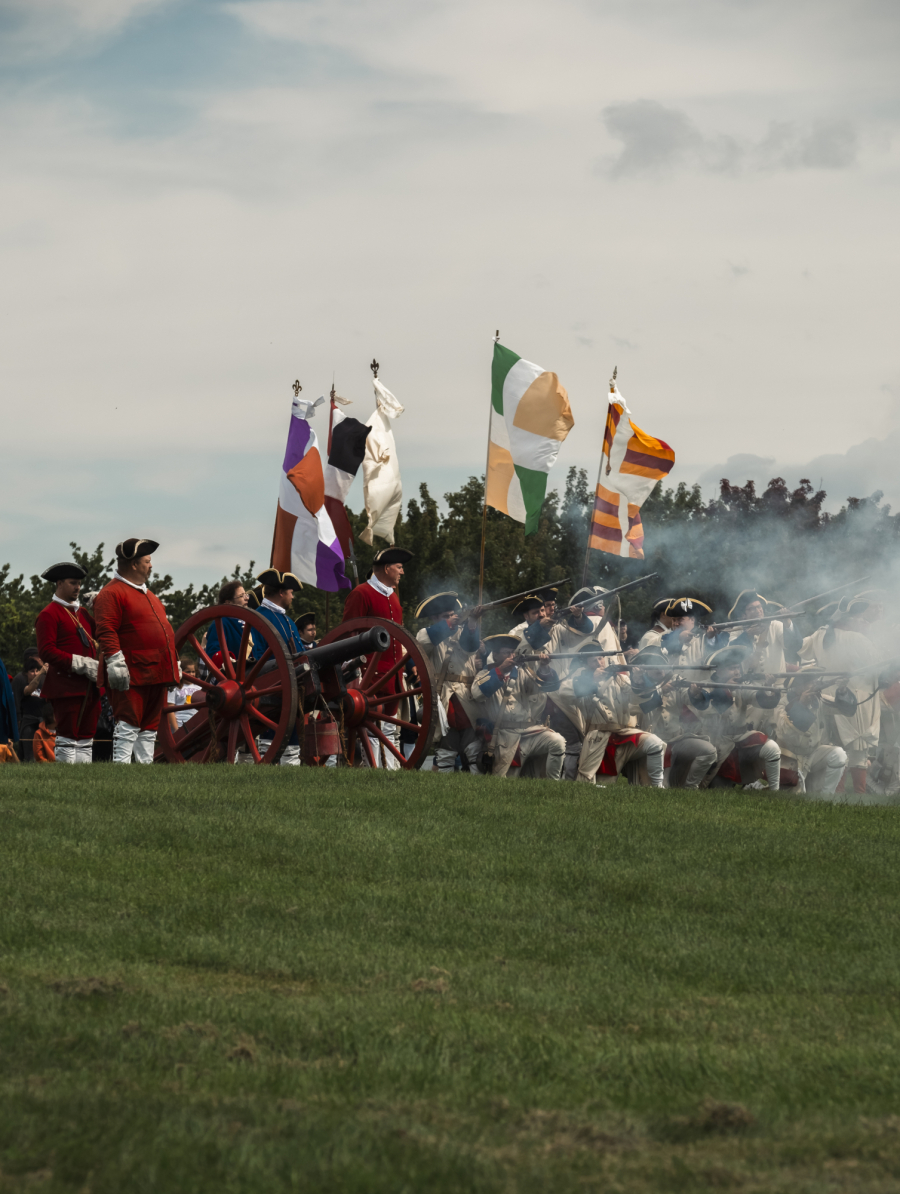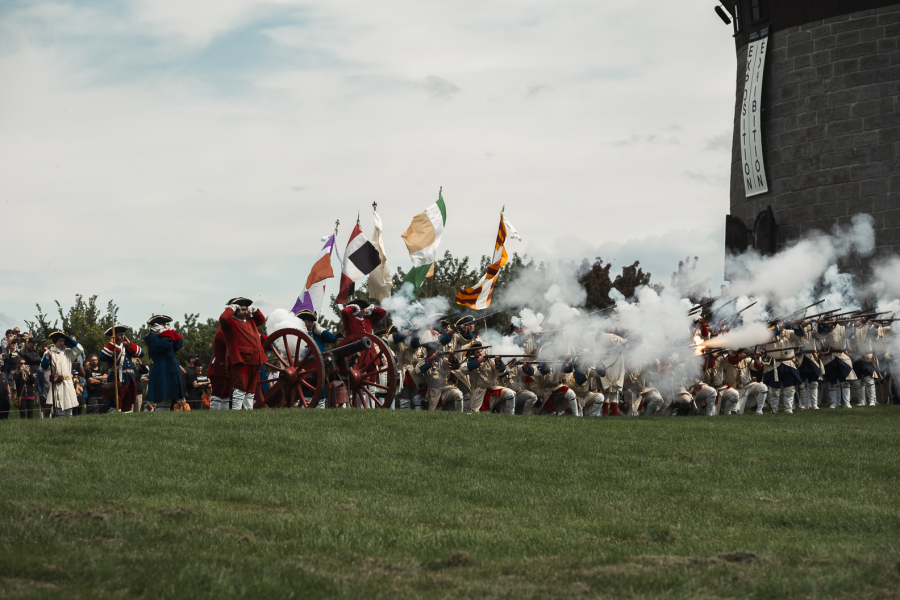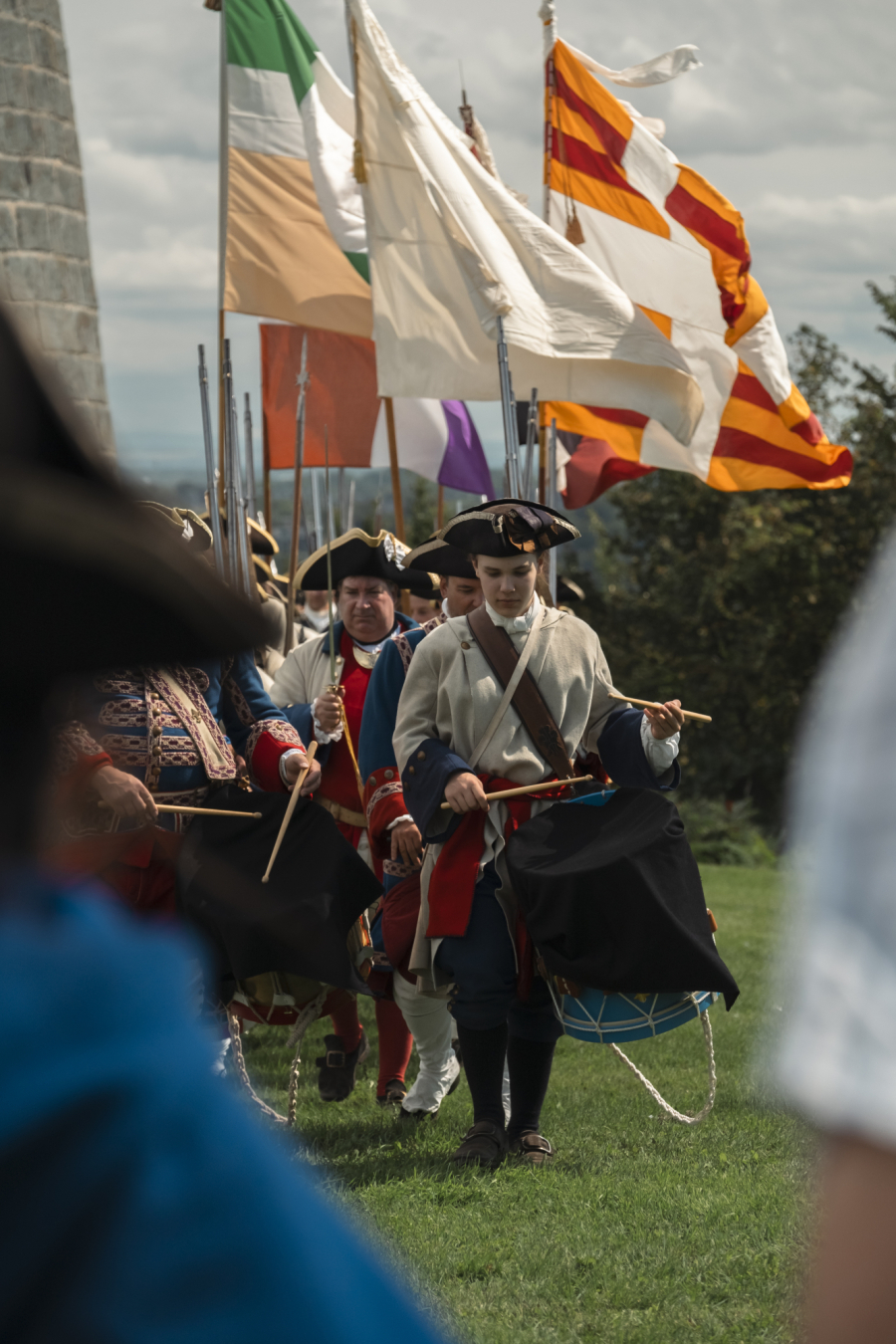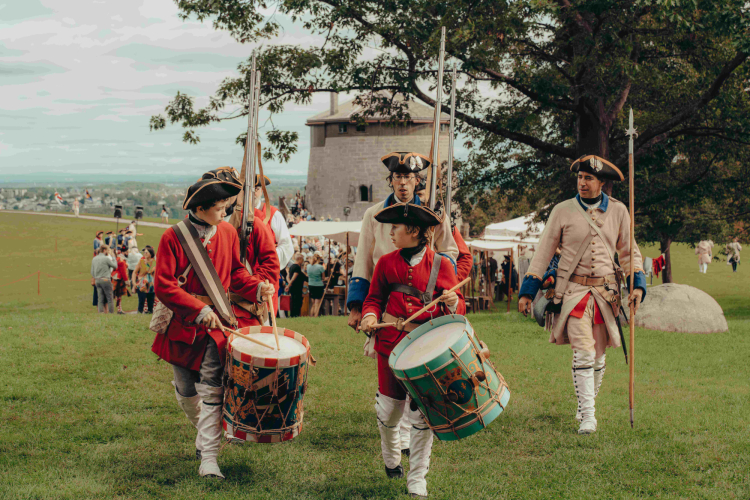The annual event “Battlefields” takes place on the Plains in early September. It is an opportunity to come and discover historical activities about many aspects of Quebec City’s history, including a camp that evokes army life in past centuries. In 2025, in line with the theme “Québec City under Siege,” visitors will get to see regiments that were present in Quebec City from the 17th to 19th centuries. These units served the French Crown, the British Crown, or the American Continental Congress and took part in many different campaigns. The following is a history of some of the regiments that reenactors will bring to life during the event.
Régiment de Guyenne (1684-1762)
This French army regiment was created in 1684 and named after a region of southwestern France. Its 2nd battalion was sent to New France in 1755 to assist the colony’s defence. Alongside the Canadian Militia and many First Nations, the French forces endeavoured to repulse the British forces that were trying to conquer the colony. The regiment was present in all the great campaigns and battles of the French army in North America, including the Battle of Fort Chouaguen (Oswego, NY) in 1756, the capture of Fort William Henry (Lake George, NY) in 1757, and the defence of Fort Carillon (Ticonderoga, NY) in 1758. In 1759, the regiment’s soldiers were sent to various locations—some to Fort Niagara, others to Isle aux Noix, and a final group to Quebec City for its defence.
Very early in the morning on September 13, 1759, while part of the Régiment de Guyenne was encamped by the Saint-Charles River, two detachments of the regiment were the first to be sent to the Plains to meet the British troops that had disembarked at Anse-au-Foulon. Lieutenant-colonel Louis Restoineau de Fontbonne, the regiment’s commander, died during the Battle of the Plains of Abraham, and the soldiers all withdrew to Montreal with the rest of the French army.
The regiment had fusiliers and grenadiers. The latter generally made up the heavy infantry—in 1759, they carried more ammunition into combat, for example. They also had a specific uniform. Instead of wearing what we now call a tricorne, they wore a tall fur cap known as a “bearskin,” which was intended to be a counterpart to the mitre cap worn by British army grenadiers at the time. The regiment was disbanded in 1762.
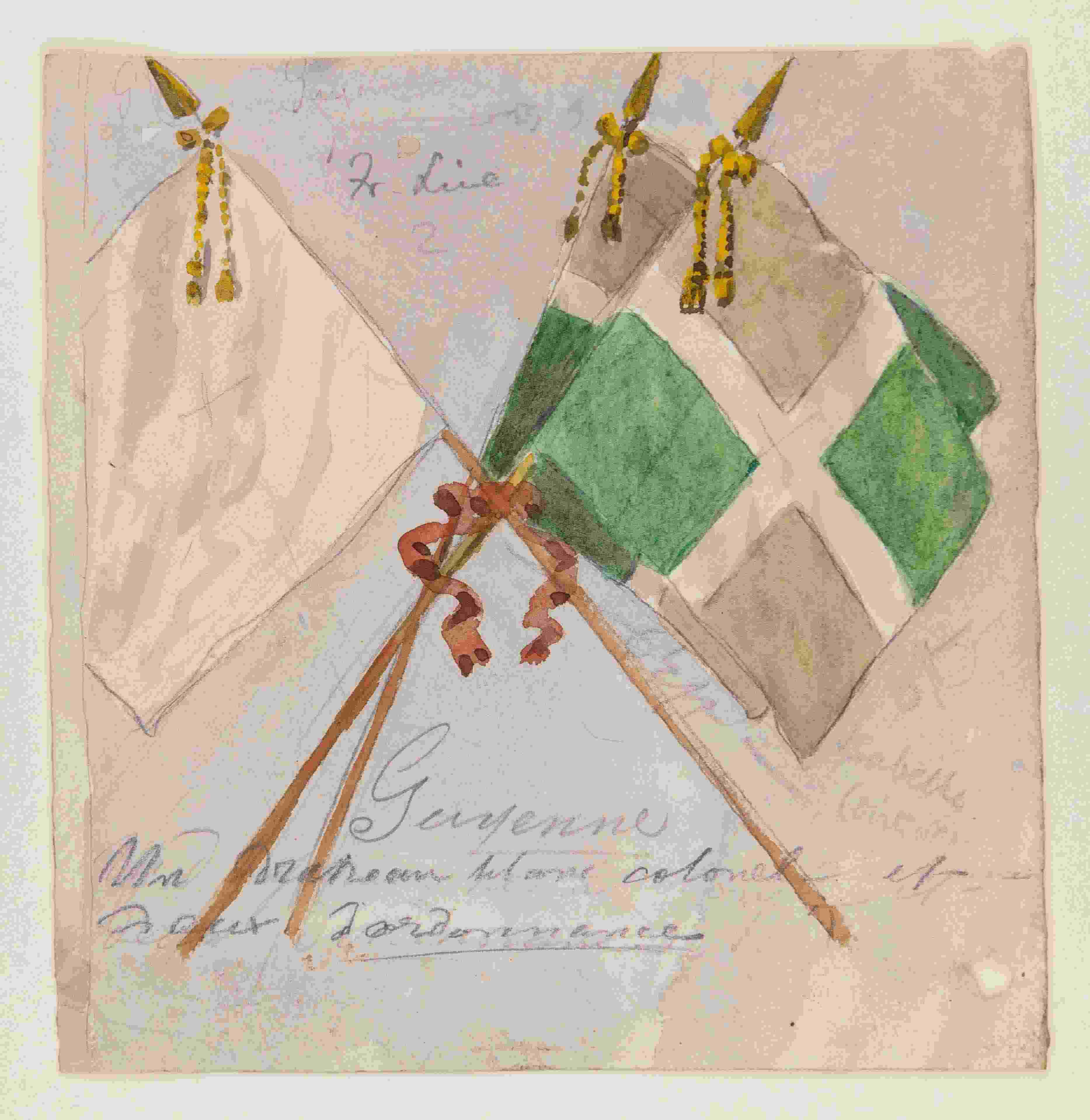
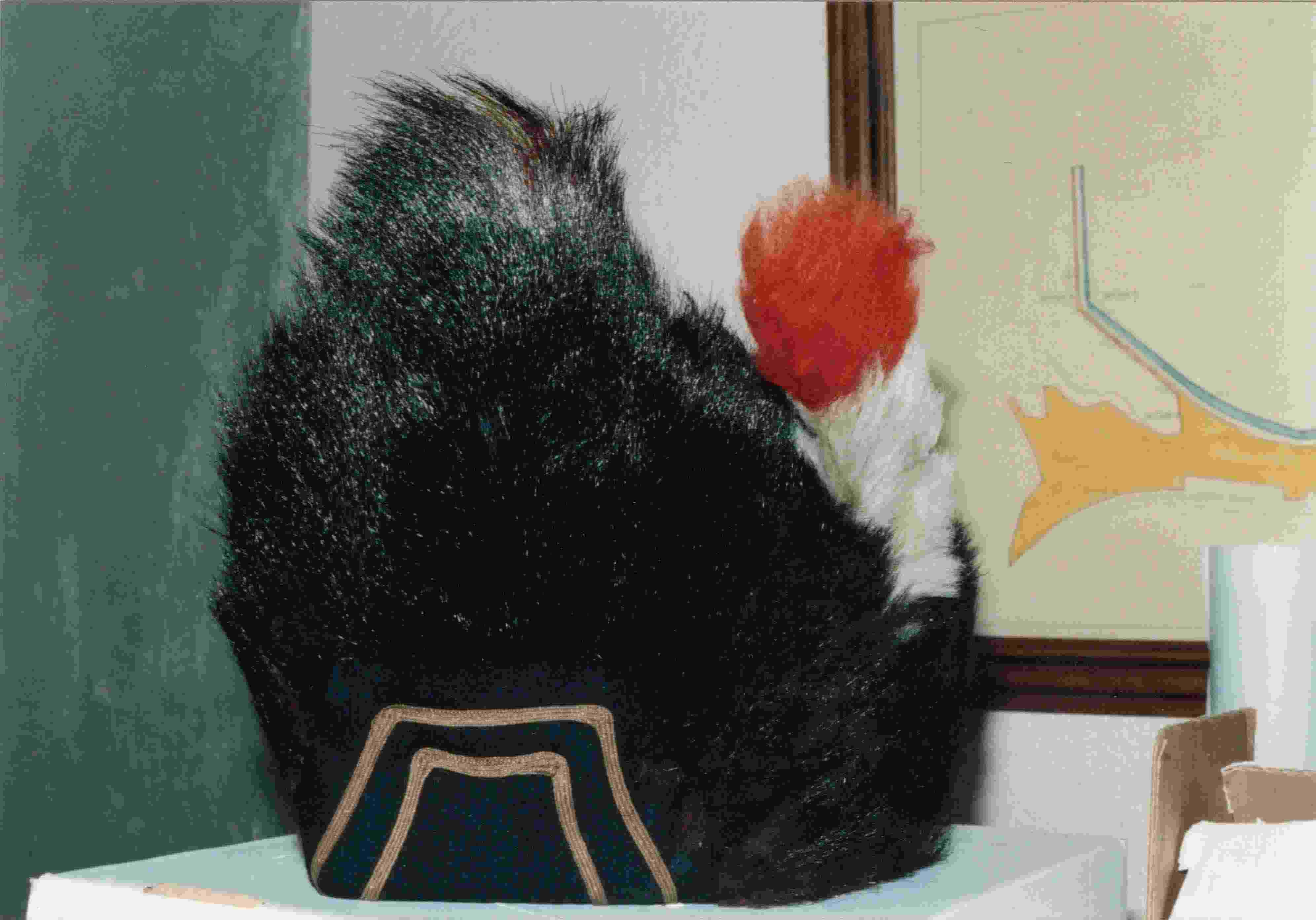
60th Regiment of Foot, Royal American (since 1755)
This regiment was created by the British in 1755, at the outbreak of the French and Indian War (1754-1760). From the very beginning, it was meant for service in North America. For this regiment, the army hoped to recruit soldiers of Swiss or German origin, who were familiar with the work of light infantry and forest warfare. The army also hoped that North American settlers would see the new unit as an opportunity to join the regular British army in due form. The regiment was the first to recruit European officers into its ranks even if they were not necessarily British subjects. Nonetheless, the officers were all Protestant.
The regiment took part in the campaign against the fortress of Louisbourg in 1758 before being deployed near Quebec City in 1759. Some soldiers of the 60th Regiment of Foot participated in the Battle of the Plains of Abraham and the Battle of Sainte-Foy. In 1760, its soldiers were sent to Montreal before the town capitulated. The regiment was also deployed during the American War of Independence (1775-1783).
The regiment remained active during the Napoleonic Wars in Europe (1803-1815) and the War of 1812 in North America. After these wars, it was renamed “The Duke of York's Own Rifle Corps” before becoming “The King's Royal Rifle Corps” in 1830. Under this name, it would take part in many conflicts, including the Boer War and the two world wars. After different mergers, it ended up being integrated into “The Royal Green Jackets,” before being finally brought together with the other infantry regiments, in 2007, to form one big British regiment “The Rifles.”
For the 2025 event on the Plains of Abraham, the reenactors will incarnate soldiers from the time of the American War of Independence (1775-1783).
84th Regiment of Foot, Royal Highland Emigrants (1775-1784)
Allan Maclean was a veteran officer from the Battle of the Plains of Abraham of 1759 who remained in North America after the end of the war. He was authorized to raise his regiment, named “The Royal Highland Emigrants,” as soon as tensions began to develop with the Thirteen Colonies in 1775. The call to arms was first answered especially by veterans of the French and Indian War, notably soldiers who served in the 42nd, 77th, and 78th regiments. Maclean also managed to recruit men from Scottish communities that remained loyal to the British Crown and which were located in the St. Lawrence valley and some of the Thirteen Colonies, such as New York and the Carolinas.
The first battalion was quickly called upon to serve during the American invasion of 1775-1776. Some of the soldiers were first stationed at Fort Saint-Jean, but they could not effectively support the British army and rapidly fell back toward Quebec City. On arriving there, Allan Maclean took charge of the military organization of the town’s defence, such as the deployment of the sentries and the guard. After helping the British repulse the invasion, this battalion was deployed mostly near Lake Champlain and in the Mohawk River valley (New York).
The second battalion came under the command of Major John Small. After taking part in the siege of Boston (1775), his men participated in several engagements in the Maritimes. His general headquarters were established at Fort Edward (Windsor, Nova Scotia), and his men served at many positions held by British forces.
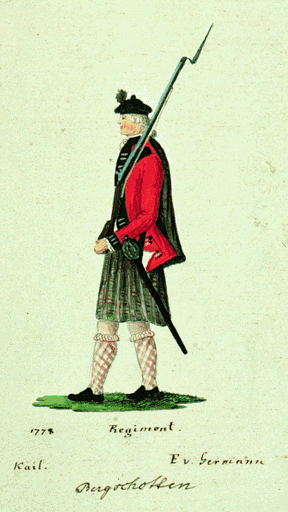
Moses Hazen and the origins of the 2nd Canadian Regiment (1776-1783)
On January 20, 1776, Colonel Moses Hazen was authorized to raise an “Extra Continental Regiment” to support the Continental Army’s efforts to defend the interests and territory of the Thirteen Colonies, which were hoping to free themselves from the British Crown. A veteran of the French and Indian War, he was receiving a pension from the British army and living near Saint-Jean when the colonial authorities of the Province of Quebec arrested him on suspicion of spying for the rebels of the Thirteen Colonies. He had allegedly been sending information about conditions in the Province of Quebec.
Mistreated during his imprisonment, and freed by the Continental Army, Hazel then decided to offer the rebels his services. He thus took part in the Battle of Quebec (December 31, 1775), where the rebels were defeated by Quebec City’s British and Canadian defenders. In the winter of 1776, after the defeat, Hazen was sent to report on the events to the Continental Congress, which gave him a commission as a colonel and authorized him to raise a regiment of Canadians who were willing to support the rebel cause. This explains why his regiment was sometimes nicknamed “Congress’ Own.”
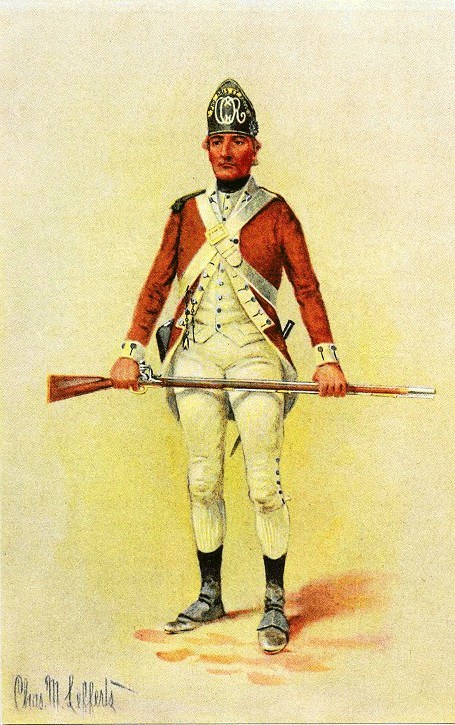
In the spring of 1776, he was back in the vicinity of Montreal. He supervised the town’s defence for a while but became embroiled in a dispute with Colonel Benedict Arnold. When the Continental Army retreated from the Province de Quebec in the summer of 1776, he was now leading a weakened regiment, including many volunteers who decided against leaving their home colony. He spent the winter in Ticonderoga and managed to recruit new soldiers.
The regiment took part in the battles of Staten Island, Brandywine, and Germantown in 1777. In 1778 and 1779, Hazen was still hoping to find a way to invade Canada, but his projects never came to fruition. In 1781, he was promoted to brigadier general and took part in the siege of Yorktown. The regiment was disbanded in 1783.
These four regiments are only a few examples among the ten or so that served on the Plains during the times that will be portrayed in “Battlefields” in 2025.
